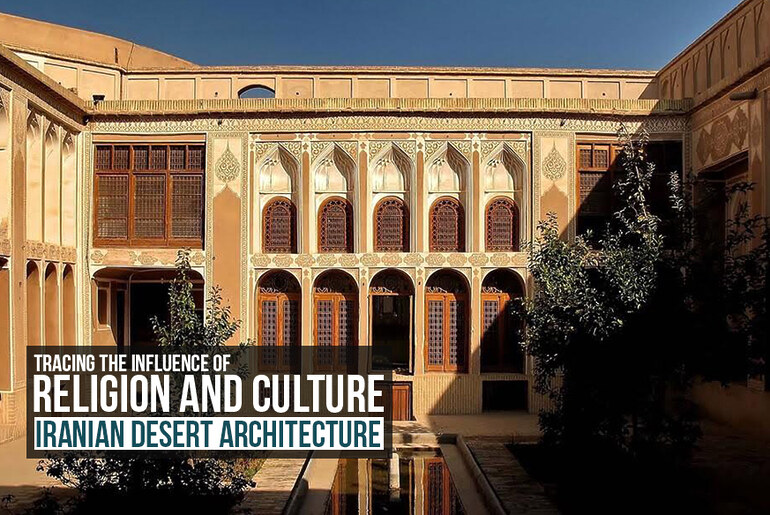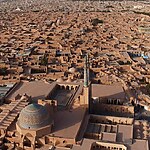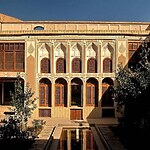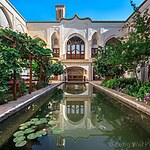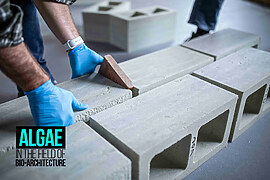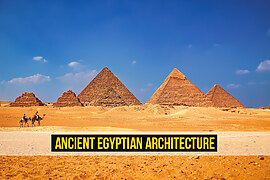The vastness and untamed beauty of desert landscapes have always captured the attention of human imagination. In these extreme environments, the architecture served as a testament to the human spirit’s resilience and the enduring quest for spiritual connection. The extreme environment of deserts presents a problem with thermal comfort, availability and cost of modern construction materials, and psychological problems. Harsh mental and physiological stress are some of the most significant characteristics of extreme desert life. Living in such an extreme environment is harsh, and in such harsh conditions, people tend to believe in a greater being, giving hope for sustenance. As a study in the Proceedings of the National Academy of Sciences suggests, the environment profoundly influences the religious landscape, with harsh climates fostering a heightened belief in gods.
Courtyard House of Yazd, Iran
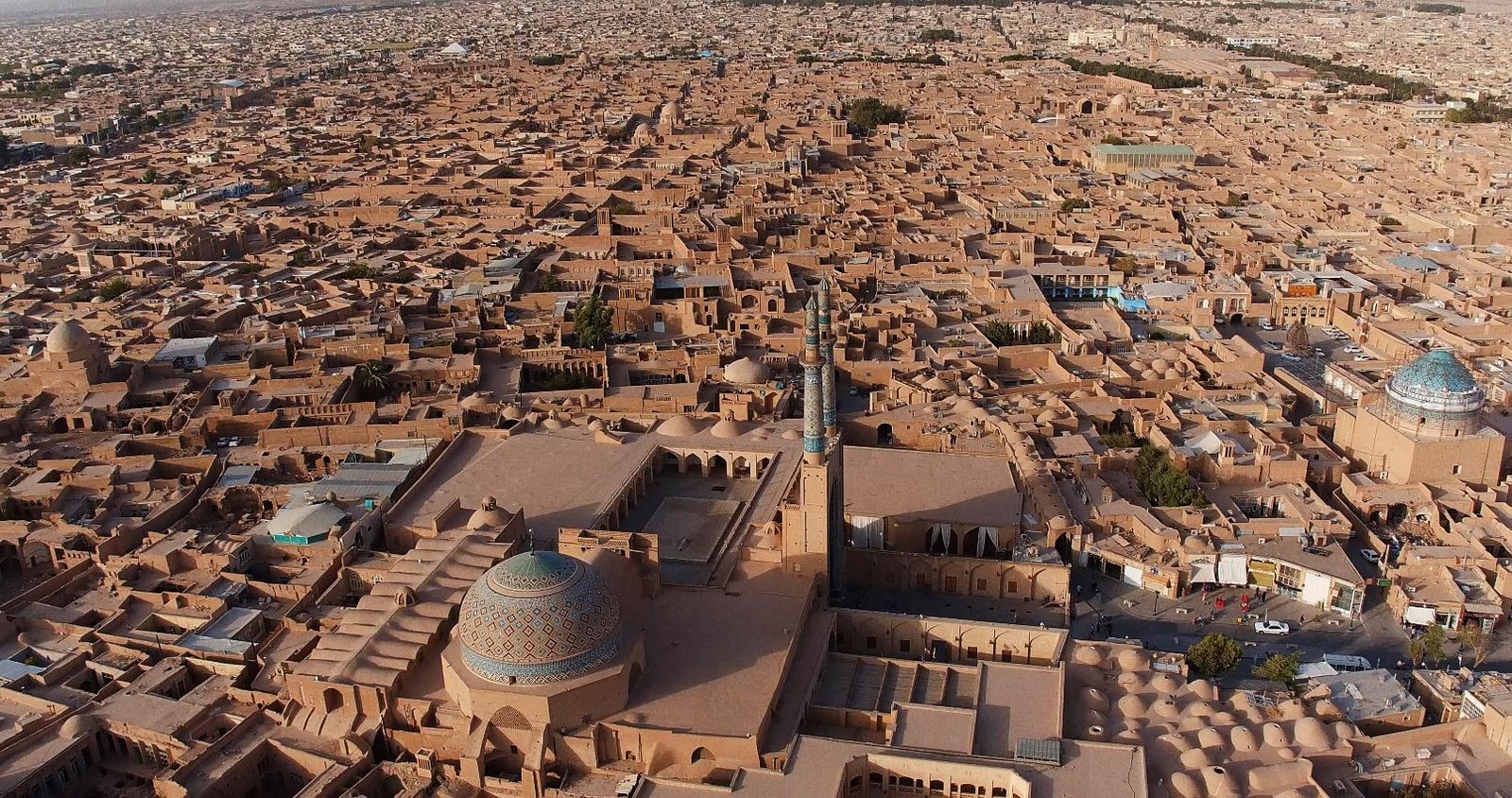
Yazd is located on the western edge of the great central desert, known as the “sand sea” of Iran. Historically Yazd was known for its deeply religious inhabitants. It was also known for its striking architectural features, including the chimney-like roof stacks known as badgirs and its aqueduct system called qanats. It is a living testimony to the intelligent use of limited available resources in the extreme desert environment for survival. Each district of the city is built on a qanat and has a community centre. Three religions, Islam, Judaism, and Zoroastrianism, cohabit in the city.
In their culture, privacy and comfort hold utmost significance, with Muslim traditions emphasizing the distinction between public and private spaces and between the genders. Due to the hot and arid conditions, the houses were required to provide physical comfort and evolved in response to climatic and ideological needs. Courtyards were provided with high walls that offered respite from the scorching desert heat while fostering a sense of earthly paradise and retreat. These houses with inward-facing rooms and such courtyards lend high levels of privacy. In the traditional culture of Iran, this was important because of the demands of the dominant religion. The people were mostly of the Ithna Ashari branch of Shi’a Islam and the religious traditions had control over social interactions between the genders by reason and kinship. This leads to a distinction between private and public spaces, the street and the home.
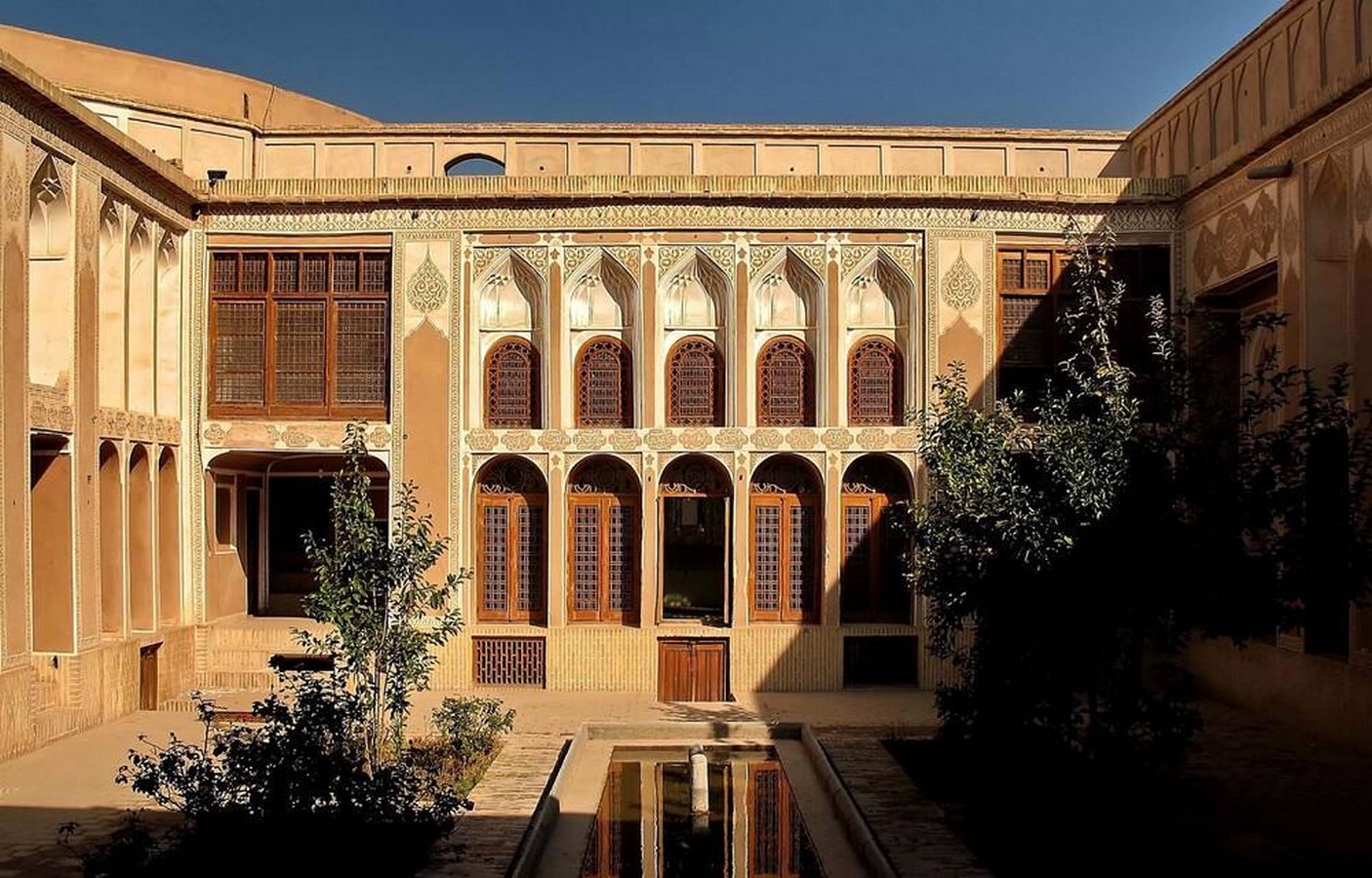
The buildings are single-story with high walls, with small openings placed above eye level. This strategic position ensures ventilation while safeguarding privacy, mirroring the climatic requirements of the hot and dry extreme environment. The entrances are located such that they don’t give a direct view into the private quarters of the residence. The urban fabric of Yazd is characterized by compressed spaces, merged walls, and blurred boundaries, minimizing the external area for exposure to hot winds and sandy gusts. The city space is enclosed, with high walls that minimize the effects of the harsh desert environment.
Traditional Houses of Kashan, Iran
Situated in the central region of Iran, Kashan is part of the Isfahan province, a hub of Islamic architecture and culture. Kashan experiences scorching summers and cold winters typical of a hot desert. Kashan’s urban fabric is condensed with houses featuring merged walls and compact construction to minimise the contact of wall surfaces for thermal exchange between the inside and the outside. The need for privacy also leads to high walls that reduce wind speeds and shady areas in passages. While the religious factors call for privacy and separation in houses through walls, they also act as shells that protect the buildings from intense sun rays and desert dust winds, and in the cold seasons, from cold winds. There aren’t many openings, protecting the privacy and preventing views into the houses.
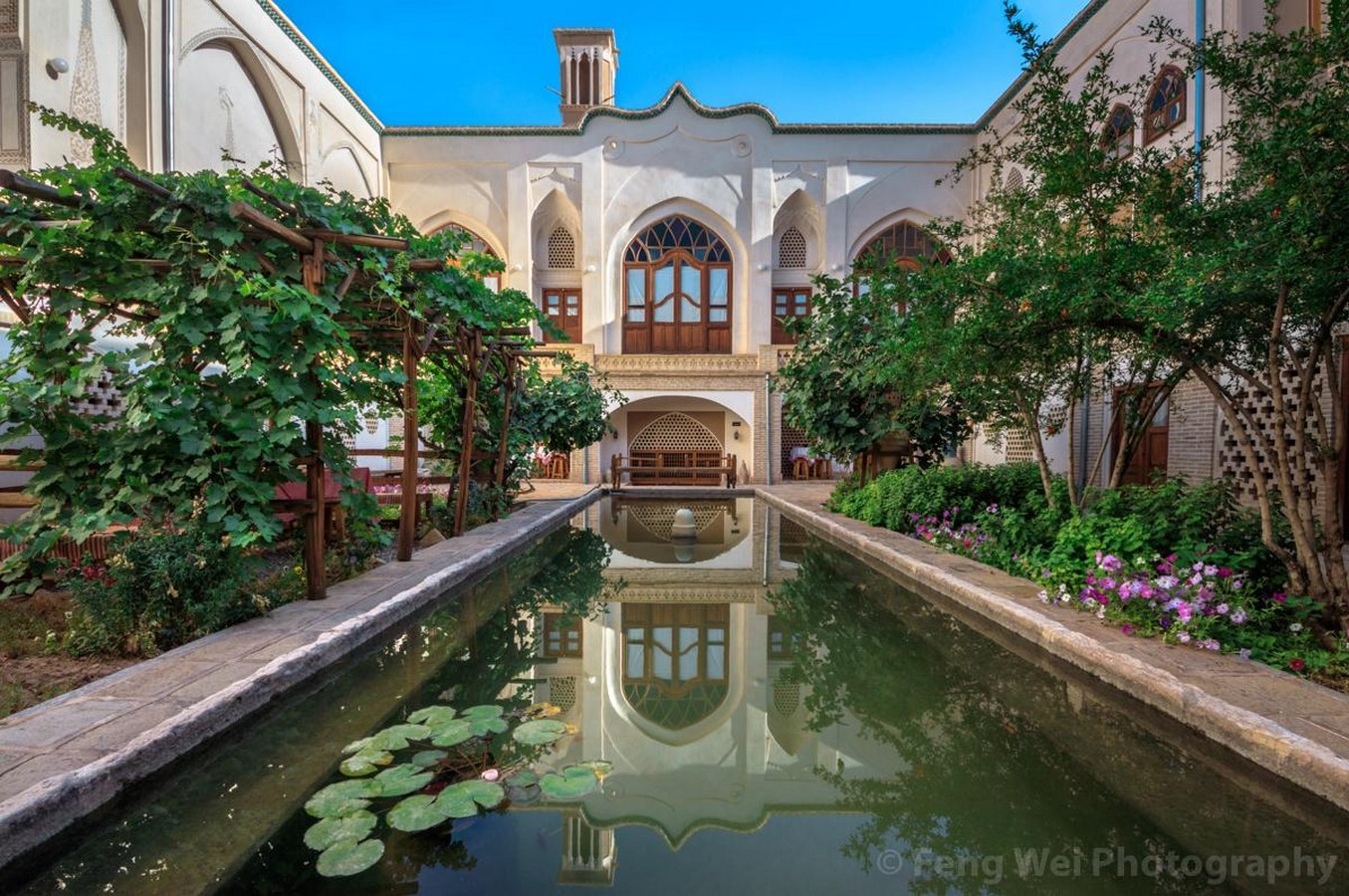
The concepts of privacy and hospitality have a great impact on these house formations in Islamic Iranian architecture. This affects the hierarchy of spaces, starting with a public space, a semi-public space, a semi-private, and a private space. Almost all of the houses in Kashan have one or more courtyards with rooms opening into them. Courtyards are the core of social gatherings in Iranian culture. It provides a space for activity and privacy, where the family can gather and enjoy the environment. These courtyards give life to the houses in the arid areas, with a touch of greenery and space for interaction. The presence of water in the courtyard also gives a religious perspective, with the sound and reflection of light acting as aesthetical parameters in Islamic architecture. The courtyards are compact enough to provide shade and have a central water pool and fruit-bearing trees, evoking tranquillity and holding religious significance. The rich people would have two central courtyards, where one is a private quarter that the family members including the wives and daughters would use, and the other is an external one.
Traditionally, the activities in the house change locations with the seasons. In summer, more activities would take place in the north-facing side where the windows are smaller, while during winter the family gathers in the south with larger windows, making the best use of the winter light. On a flat desert plain, the only place to escape the extreme heat is underground. This resulted in the typical four-level Kashani houses, two of which would be below ground. In such traditional buildings, during the scorching hot climate, the inhabitants would spend their afternoons cool in the deep basements and the rooms around the courtyards.
The complicated interactions between culture, religion, and the harsh desert environment are reflected in the architecture of Iran’s Kashan and Yazd regions. These reflect a persistent desire for spiritual connection amid the vast desert and represent the resilience of human inventiveness in adapting to and surviving in such extreme environments. With advancements in technology, lesser importance is given to these organic and passive ways of architecture. Yet, their significance remains undeniable, offering invaluable lessons in sustainable living and cultural preservation for the future.
Bibliography:
UNESCO WHC (no date) Historic City of Yazd, UNESCO World Heritage Convention. Available at: https://whc.unesco.org/en/list/1544/#:~:text=The%20earthen%20architecture%20of%20Yazd,historic%20garden%20of%20Dolat%2Dabad. (Accessed: 11 March 2024).
Karimi, A.Z. and Hosseini, B. (2012) The influence of Iranian Islamic architecture on … Available at: https://www.mukogawa-u.ac.jp/~iasu2012/pdf/iaSU2012_Proceedings_204.pdf (Accessed: 12 March 2024).
Zhu, Yueling. (2023). Cultural Identity of Desert Architecture: Exploring Strategies for Integrating Traditional and Modern. Highlights in Science, Engineering and Technology. 75. 51-60. 10.54097/xhh50753.
Rahimi, R. (2019) Architecture of historical houses in Kashan, Iran, Academia.edu. Available at: https://www.academia.edu/39657963/ARCHITCTURE_OF_HISTORICAL_HOUSES_IN_KASHAN_IRAN (Accessed: 12 March 2024).
Mooney, C. (2014) How harsh environments make you believe in god (or gods) – the …, Washington Post. Available at: https://www.washingtonpost.com/news/wonk/wp/2014/11/10/how-harsh-environments-make-you-believe-in-god-or-gods/ (Accessed: 12 March 2024).
Kashan Architecture (2020) Iran Visitor – Travel Guide To Iran. Available at: https://www.iranvisitor.com/city-guides/kashan-houses#:~:text=The%20beauty%20of%20Kashan%27s%20architecture,to%20the%20dry%20desert%20summers (Accessed: 12 March 2024).


